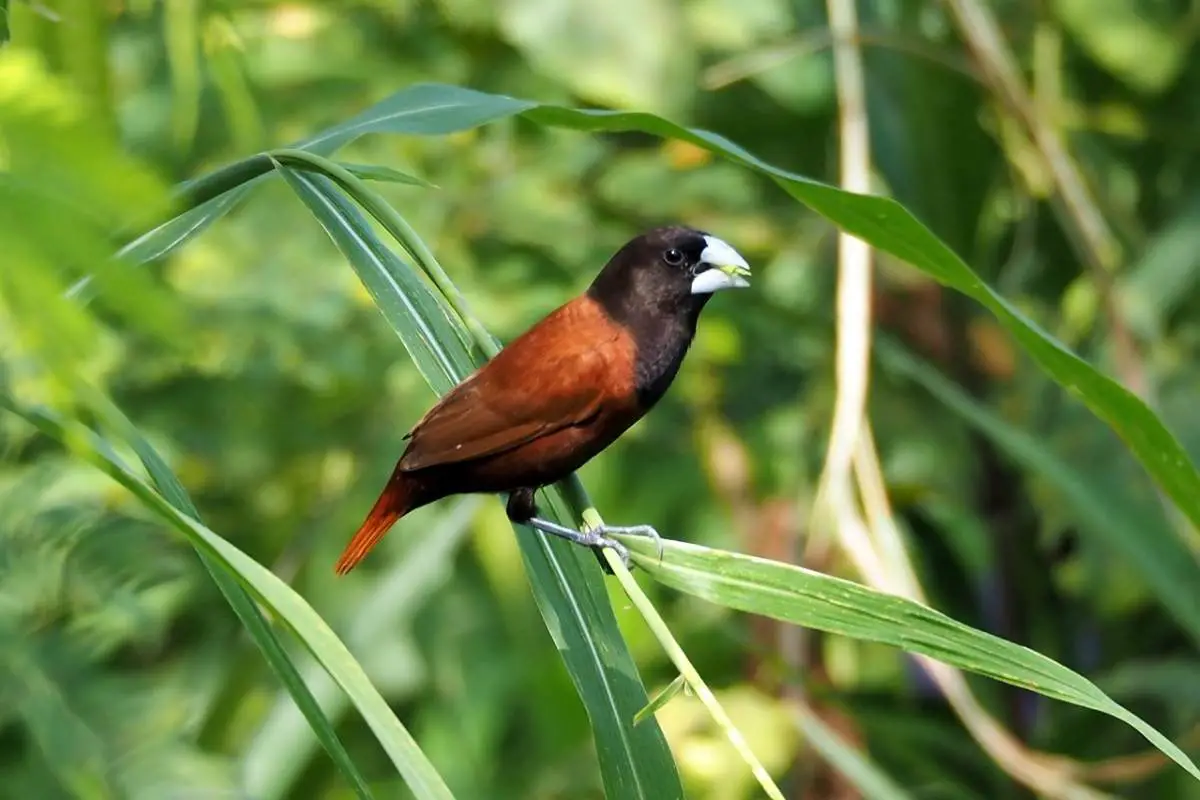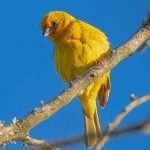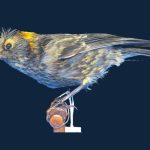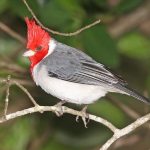Common Name: Chestnut Munia
Scientific Name: Lonchura atricapilla| Size | Diet | Range in Hawaii | Status in Hawaii |
|---|---|---|---|
| 5 - 6 in. | seeds, grains, and insects | Oahu, Kauai, and Big Island | least concern |
The Chestnut Munia (Lonchura atricapilla), also known as the Chestnut-headed Munia or Chestnut-headed Finch, is a small passerine bird native to Southeast Asia. It is a popular cage bird due to its attractive appearance and singing ability.
Chestnut Munia
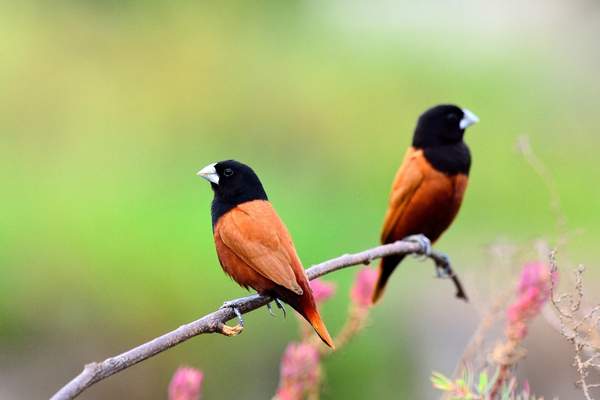
Appearance
The Chestnut Munia has a distinctive chestnut-colored head, neck, and breast, with a white belly and gray wings and tail. It has a slender, conical bill and a distinctive black eye stripe. They typically measure around 5-6 inches (13-15 cm) in length and weigh between 0.5-0.7 ounces (14-20 grams).
Diet
These birds are social and can often be found in large flocks, feeding on seeds, grains, and insects.
Behavior
They are known for their friendly and outgoing nature, and they are often kept as cage birds because of their singing ability and attractive appearance. Chestnut Munias have a variety of vocalizations, including a series of trills and chirps that they use to communicate with one another. They are also known to mimic the sounds of other birds and animals.
Chestnut Munias are not migratory, and they are generally non-aggressive towards other species. However, they can be territorial during the breeding season and may defend their nests from intruders.
Nesting
Chestnut Munias typically breed during the dry season and build nests out of grass and plant fibers, which they line with feathers and other soft materials. The nests are usually located in bushes or low trees, and are often built near the ground.
The female Chestnut Munia lays a clutch of 3-7 eggs, which are incubated by both parents for about 12-14 days. The chicks are altricial, meaning they are born naked and helpless, and both parents participate in feeding and caring for them. The chicks fledge (leave the nest) after about 2-3 weeks, but they continue to be dependent on their parents for a few more weeks before becoming fully independent.
Habitat
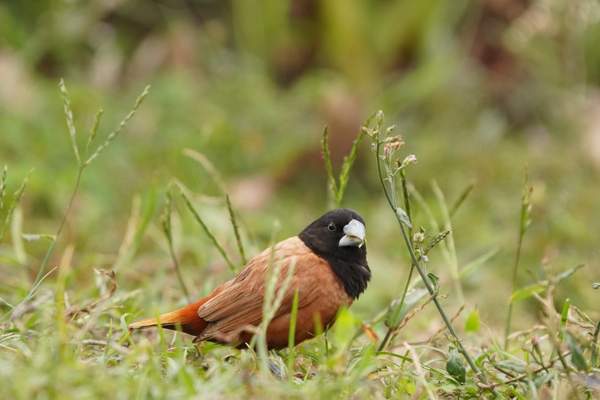
In the wild, Chestnut Munias inhabit grasslands, fields, and gardens, and they are known to be adaptable to a variety of habitats.
Range
In Hawaii, the Chestnut Munia is an introduced species, and it is found on several of the main islands, including Oahu, Kauai, and Hawaii Island. It is most common in urban and suburban areas, and it is often found in gardens, parks, and other landscaped areas.
Conservation Status
The Chestnut Munia (Lonchura atricapilla) is listed as a species of “Least Concern” on the IUCN Red List, which means that it is not currently facing any known major threats and is not considered to be at risk of extinction in the wild.
Interesting Facts
1. They have other common names
The Chestnut Munia is also known as the Chestnut-headed Munia or Chestnut-headed Finch.
2. They are popular cage birds
Chestnut Munias are popular cage birds due to their attractive appearance and singing ability.
3. They are social birds
Chestnut Munias are social birds and are often found in large flocks. They are known for their friendly and outgoing nature.
4. They are native to Southeast Asia
These birds are native to Southeast Asia and are found in Indonesia, Malaysia, the Philippines, and Thailand.
Frequently Asked Questions
How can you tell if a Chestnut Munia bird is male or female?
It can be difficult to distinguish between male and female Chestnut Munias based on physical appearance alone, as they are sexually dimorphic, meaning there are no visible differences between the sexes. However, there are a few ways to determine the sex of a Chestnut Munia by observing behavior, analyzing feather patterns and DNA testing.
How long does chestnut munia live?
The lifespan of a Chestnut Munia can vary depending on a number of factors, including diet, habitat, and overall health. In the wild, Chestnut Munias are thought to have an average lifespan of about 5-7 years, although some individuals may live longer. In captivity, with proper care and nutrition, Chestnut Munias may live for up to 10 years or longer.
How do you breed a Munia?
If you are interested in breeding Chestnut Munias or any other species of bird, it is important to thoroughly research and understand the specific needs and requirements of the species before attempting to breed them. It is also important to follow all relevant laws and regulations regarding the breeding and sale of birds.
